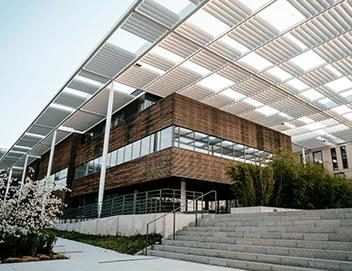When your AV systems are connected — cameras, microphones, control processors, displays — they become part of your network perimeter. In Australia, where cybersecurity is top-of-mind, AV systems must be secured — not an afterthought. That’s why security-first AV monitoring is not optional; it’s essential.
AV Is a Networked System
Modern AV systems increasingly rely on IP connectivity, centralized control, and cloud-accessible services. Without proper visibility and control, AV gear can become an attack vector for malicious actors. The AV monitoring market — part of the broader AV RMM space — is forecast to grow from USD 27.43 billion in 2024 to USD 40.16 billion by 2033 (CAGR ~5.6 %). Business Research Insights
Meanwhile, the global AV system market is predicted to rise from USD ~248.7 billion in 2025 to USD 427.43 billion by 2033 (CAGR ~6.3 %). Business Research Insights These trends signal that AV is no longer siloed — it’s network infrastructure. And like any network component, it must adhere to security best practices.
Key Security Considerations for AV Monitoring
- Deploy in your own cloud / infrastructure — avoid shared multitenant environments that violate your policies.
- Use delegated authentication (e.g., SSO, LDAP, Azure AD) — control who sees what and prevent misuse.
- Encrypted communication & data at rest — ensure your monitoring data is always protected.
- Role-based access control (RBAC) — restrict permissions based on function (engineer, technician, viewer).
- Audit logs & alerts — track who did what and when.
- Integration with SIEM / security tools — forward alerts to your broader security stack.
The Australian Compliance Context
Australian organisations frequently align to standards like ISO 27001, ASD Essential Eight, NIST, or in government settings, IRAP / PSPF. AV infrastructure falls under the umbrella of connected systems — and must be managed accordingly.
Deploying AV monitoring on your own cloud or within your secure network means your AV data is subject to the same controls and scrutiny as your core systems.
Why This Matters Locally
- Educations, councils, and governments in Australia often handle sensitive media (lectures, council sessions, legal hearings). A breach could expose audio, video, or backchannel systems.
- Some AV systems are used in controlled environments (courtrooms, secure facilities) where trust and control are critical.
- Because Australia is part of global cyber risk chains, an AV breach could have reputational or compliance implications beyond just the room itself.
How AVM360 Adopts a Security-First Stance
- Deployable on your own cloud infrastructure, fully aligning to your security controls.
- Supports role-based access, SSO, and audit trails.
- Designed to integrate seamlessly with broader security and service systems.
- Built for segregation and least privilege — AV monitoring should have no unneeded network reach.
Takeaway
AV systems are no longer passive infrastructure — they’re active, networked, mission-critical assets. For Australian organisations, treating monitoring as a secure system is non-negotiable.
By adopting a security-first AV monitoring platform, you gain visibility and control — without introducing risks. In a time when data breaches dominate headlines, AV visibility should be as trusted as your firewall.







1 Comment
Hi, this is a comment.
To get started with moderating, editing, and deleting comments, please visit the Comments screen in the dashboard.
Commenter avatars come from Gravatar.